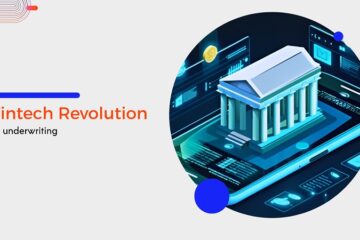The financial landscape is undergoing a profound transformation due to the rise of LendTech—a sector that leverages digital technology to streamline and optimize the lending process. LendTech companies use innovations like artificial intelligence (AI), machine learning, big data, and blockchain to reshape how loans are processed, underwritten, and disbursed. For businesses, particularly small and medium-sized enterprises (SMEs), these advancements offer faster, more accessible, and flexible loan options compared to traditional banking institutions.
What is LendTech?
LendTech refers to the use of financial technology (FinTech) to improve and transform the lending process. Unlike traditional lending, which often involves long approval times, extensive paperwork, and rigid criteria, LendTech simplifies the process through automation, data analysis, and real-time decision-making. LendTech platforms cater to a wide array of loans, including personal, mortgage, and auto loans, but one of its most transformative impacts has been on business loans, particularly for SMEs.
LendTech’s ability to integrate modern technologies into the lending process has made borrowing easier, faster, and more tailored to the specific needs of businesses in today’s fast-paced economy.
A. How LendTech is Revolutionizing Lending Practices
With the current lending and credit practices, the benefits are restricted by lengthy process. The LendTech can accelerate the process maintaining required compliance and regulatory check. Another aspects of LendTech is creating better customer experience.
1. Faster Loan Approvals and Disbursement
One of the most significant impacts of LendTech on business loans is the dramatic reduction in approval times. Traditional banks often require weeks to process and approve loan applications due to manual underwriting and bureaucratic procedures. In contrast, LendTech platforms use automated systems to analyze applications, assess creditworthiness, and approve loans in a matter of hours or days.
- Automated Underwriting: LendTech platforms employ AI-driven algorithms to assess borrower risk using real-time data. This automation reduces the need for manual reviews, significantly speeding up the approval process.
- Digital Verification: LendTech platforms streamline the loan application process by using digital tools to verify documentation and financial data quickly. This includes automated verification of income, tax records, and bank statements, which reduces the time spent gathering and reviewing documents.
- Impact: The ability to access funding quickly allows businesses, particularly SMEs, to capitalize on growth opportunities, manage cash flow gaps, or address unexpected financial needs more efficiently.
2. Expanded Access to Capital for SMEs
Traditional lending institutions have often been hesitant to provide loans to SMEs due to the perceived risk and high costs of servicing smaller loans. LendTech is democratizing access to business loans by making capital more available to a wider range of businesses, particularly those that may have been underserved by traditional banks.
- Alternative Credit Scoring: LendTech platforms use alternative data to assess creditworthiness. Instead of relying solely on credit scores, they analyze data from a business’s cash flow, e-commerce transactions, and even social media activity. This allows more businesses, especially startups or those with limited credit history, to qualify for loans.
- Flexible Loan Options: LendTech companies offer a variety of loan products tailored to different business needs, including short-term loans, working capital loans, and invoice financing. This flexibility allows businesses to choose loans that align with their specific financial goals and repayment capabilities.
- Impact: By broadening the criteria for loan approval and offering a diverse range of loan products, LendTech platforms are filling a crucial gap in business financing. This expanded access to capital enables SMEs to invest in growth, manage operations, and scale their businesses in ways that were previously limited by traditional lending options.
3. Personalized Loan Offers and Better Risk Management
LendTech platforms are leveraging AI and big data to offer personalized loan solutions that are tailored to the specific needs and risk profiles of individual businesses. By analyzing a wide range of data points, LendTech companies can craft loans with customized terms, interest rates, and repayment schedules.
- Dynamic Pricing: LendTech platforms use AI-driven models to dynamically price loans based on real-time risk assessments. This allows businesses with strong financial performance or lower risk profiles to access loans with better terms and lower interest rates.
- Data-Driven Risk Management: Traditional banks typically rely on historical financial performance to assess risk. LendTech platforms, however, use real-time data analytics to continuously monitor borrower risk throughout the life of the loan. This proactive approach allows lenders to adjust loan terms or take preventive action if a borrower’s financial situation changes.
- Impact: Personalized loan offers enhance the borrower experience by providing businesses with more affordable and tailored financing options. For lenders, AI-driven risk management reduces default rates, resulting in a healthier loan portfolio.
4. Embedded Lending and Integrated Financial Services
Another major innovation brought by LendTech is embedded lending, where loans are seamlessly integrated into existing digital platforms, e-commerce sites, or financial tools that businesses already use. This allows businesses to access financing at the point of need without having to visit a traditional bank or financial institution.
- Integration with Payment Processors and Platforms: LendTech platforms are partnering with e-commerce platforms and payment processors like Shopify, PayPal, and Square to offer integrated financing options. For example, a business selling products on Shopify can access a working capital loan based on its sales data directly within the platform, making borrowing effortless and aligned with the business’s cash flow.
- Buy Now, Pay Later (BNPL) for B2B: LendTech platforms are extending BNPL options to business-to-business (B2B) transactions, enabling businesses to purchase inventory, equipment, or services on credit, with repayment spread out over several months. This gives businesses the flexibility to manage their cash flow while continuing to invest in growth.
- Impact: Embedded lending streamlines the borrowing process by offering financing options where businesses are already operating. This increases convenience and access to capital, particularly for businesses that need quick, short-term financing to fuel growth or manage operational expenses.
5. Enhanced Transparency and User Experience
LendTech platforms place a strong emphasis on transparency and user experience, addressing one of the common frustrations business owners face with traditional lenders—complex terms and hidden fees. LendTech companies use technology to simplify loan applications, provide clear terms, and offer real-time updates on loan status.
- Simplified Application Process: LendTech platforms often use user-friendly interfaces that allow business owners to complete loan applications within minutes. Automation and pre-populated forms, using data already available through digital banking or accounting software, reduce the need for repetitive manual input.
- Transparency and Clear Terms: LendTech platforms emphasize transparency by providing clear information on interest rates, fees, and repayment schedules upfront. Many LendTech companies provide easy-to-use calculators that show the total cost of borrowing, helping businesses make informed decisions.
- Real-Time Tracking: Business owners can monitor their loan status, repayment progress, and even apply for additional funding through intuitive dashboards that provide real-time updates and insights into their financial health.
- Impact: Enhanced transparency and a seamless user experience improve customer satisfaction and build trust in LendTech platforms. This is crucial for retaining clients and encouraging repeat borrowing.
B. Challenges in the LendTech Ecosystem
The LandTech ecosystem offers significance opportunities to accelerate digital lending and credit. However, in order to capitalize the opportunities LendTech srevice providers need to address several challenges.
- Regulatory Compliance: As LendTech platforms continue to grow and evolve, they must navigate complex regulatory landscapes. Compliance with anti-money laundering (AML) laws, data privacy regulations, and lending standards varies across jurisdictions and can be challenging to manage.
- Data Privacy and Security: LendTech companies handle sensitive business and financial data, making them targets for cyberattacks. Ensuring robust cybersecurity measures and safeguarding customer data is critical for maintaining trust in the LendTech ecosystem.
- Dependence on Data Accuracy: LendTech platforms rely heavily on the accuracy and completeness of data to make lending decisions. Inaccurate data or gaps in data availability can lead to faulty risk assessments or approval of high-risk loans, increasing the potential for defaults.
C. Opportunities in the LendTech Ecosystem
Considering the technological evolution and growing adaptation, LendTech offers several opportunities for lending in digital age. The range of opportunities varies from unserved/underserved market to continuous technological evolution.
- Serving Underserved Markets: LendTech platforms have the opportunity to reach underserved markets, such as businesses in developing economies or those with limited access to traditional banking. By leveraging mobile technology and alternative credit scoring, LendTech can expand access to capital in regions that have been historically overlooked by financial institutions.
- Partnerships with Traditional Banks: Rather than competing directly with traditional banks, many LendTech companies are forming partnerships with established financial institutions. These partnerships allow banks to integrate LendTech innovations into their offerings, enhancing their digital capabilities and reaching new customer segments.
- Innovative Lending Products: LendTech platforms are constantly innovating to offer new types of loans that meet the changing needs of businesses. From revenue-based financing and subscription financing to micro-loans tailored for gig economy workers, LendTech companies are creating diverse products that cater to modern business models.
D. The Future of Business Loans in the Digital Age
The future of business lending is poised to become more digital, inclusive, and data-driven, with LendTech continuing to play a central role in shaping this evolution. Key trends to watch in the coming years include:
- AI-Powered Lending Decisions: The use of AI in lending will become more sophisticated, allowing lenders to assess risk more accurately and offer even more personalized loan products. AI will also help identify new lending opportunities, particularly for niche markets or emerging industries.
- Decentralized Finance (DeFi): The rise of DeFi platforms may introduce decentralized, peer-to-peer lending options for businesses. DeFi offers a more transparent and decentralized alternative to traditional lending, where businesses can access capital without relying on banks or intermediaries.
- Sustainability and Green Financing: As businesses increasingly focus on sustainability, LendTech platforms may offer specialized loans for eco-friendly projects or green technology adoption. This could create new opportunities for businesses to access financing aligned with their environmental goals.
The LendTech revolution is transforming the way businesses access capital in the digital age. By offering faster approvals, personalized loan solutions, and greater access to underserved markets, LendTech platforms are democratizing business financing and driving economic growth. As these platforms continue to innovate, they will shape the future of business loans by making them more efficient, transparent, and accessible to businesses of all sizes.
While challenges remain in areas like regulatory compliance and data security, the opportunities presented by LendTech far outweigh the risks, promising a more inclusive and dynamic lending ecosystem for the future.








